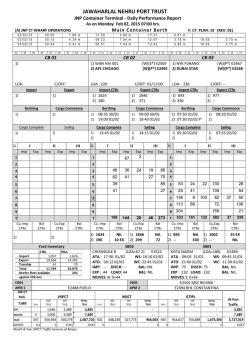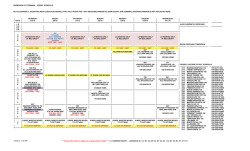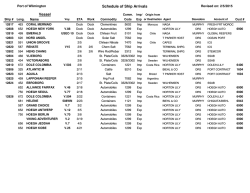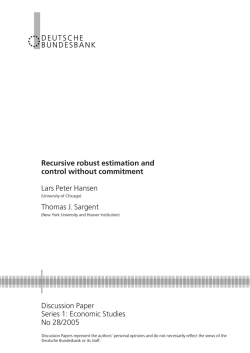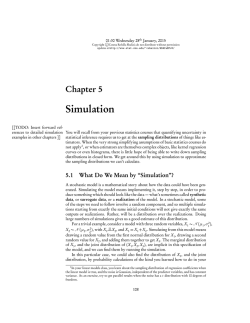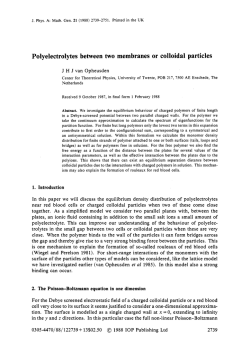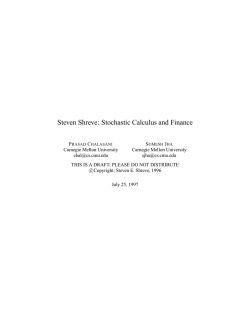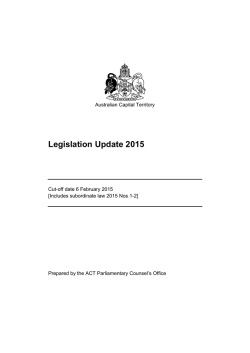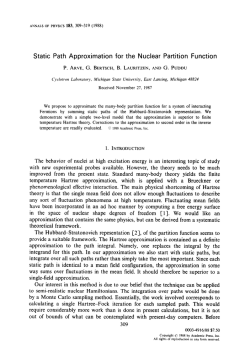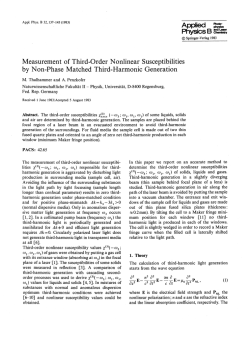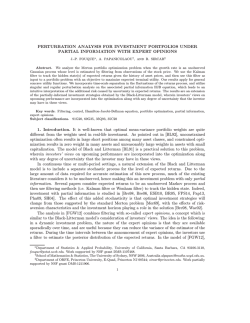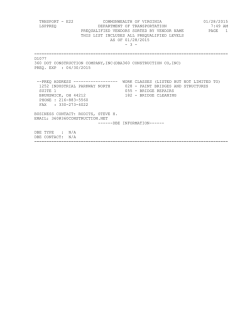
Moments of the distributio function and kinetic
MOMENTS
OF
EQUATION
FOR
V.V.
THE
DISTRIBUTION
STOCHASTIC
MOTION
FUNCTION
OF
A
AND KINETIC
NONLINEAR
OSCILLATOR
Sokolov
An analytic approach to study of the stochastic motion of a nonlinear system in a periodic
external potential is developed. In contrast to a number of other approaches, no additional
external random parameters are introduced a priori. A method for calculating the moments
of the distribution function is constructed. In particular, the problem of calculating the
diffusion coefficient is reduced to the solution of an infinite inhomogeneous system of linear
equations. In the limit of large values of Chirikov's stochasticity parameter K, this system
simplifies strongly and reduces to a system of two equations up to terms of order 1/4-4-~.
In this limit, the diffusion coefficient can be readily found in explicit form. In the leading
approximation in the parameter I/4--4-K a closed expression is obtained for the generating
function of the moments of the distribution function. It differs strongly from the standard
Gauss[an expression. A kinetic equation is obtained for the coarse-grained distribution
function. Although it differs from the standard diffusion equation that is generally used,
its solution tends asymptotically at large times to the Gaussian distribution.
1.
Introduction
The d i s c o v e r y of s t o c h a s t i c b e h a v i o r of c l a s s i c a l d y n a m i c a l s y s t e m s with finite and even s m a l l
n u m b e r of d e g r e e s of f r e e d o m is one of the most i n t e r e s t i n g a c h i e v e m e n t s of t h e o r e t i c a l m e c h a n i c s in recent
y e a r s . F i r s t d i s c o v e r e d in m a t h e m a t i c a l i n v e s t i g a t i o n s [1,2], this phenomenon was a s s i m i l a t e d by the
p h y s i c i s t s once Chirikov [3] had developed a s i m p l e q u a l i t a t i v e p i c t u r e of the o c c u r r e n c e of s t o c h a s t i c i t y
b a s e d on study of the i n t e r a c t i o n of n o n l i n e a r r e s o n a n c e s . In p a r t i c u l a r , he f o r m u l a t e d a c r i t e r i o n of o v e r lapping of r e s o n a n c e s , which m a k e s it p o s s i b l e to find e f f e c t i v e l y conditions on the p a r a m e t e r s of a s y s t e m
u n d e r which s t o c h a s t i c motion o c c u r s . Although it e n a b l e s one to e s t a b l i s h the boundary of s t o c h a s t i c
i n s t a b i l i t y , C h i r i k o v ' s c r i t e r i o n is not, however, in i t s e l f a method that m a k e s it p o s s i b l e to i n v e s t i g a t e the
b e h a v i o r of the s y s t e m with t i m e . Such i n v e s t i g a t i o n s w e r e t h e r e f o r e made by n u m e r i c a l i n t e g r a t i o n of the
equations of motion of n o n l i n e a r s y s t e m s on a c o m p u t e r [4, 5].
Since s t o c h a s t i c i n s t a b i l i t y of n o n l i n e a r s y s t e m s is a f a i r l y u n i v e r s a l phenomenon, in q u a l i t a t i v e
i n v e s t i g a t i o n s it is sufficient to make a r e s t r i c t i o n to the s i m p l e s t m o d e l s . A p o p u l a r model of this kind
is a o n e - d i m e n s i o n a l n o n l i n e a r s y s t e m moving u n d e r the influence of p e r i o d i c i n s t a n t a n e o u s i m p u l s e s and
d e s c r i b e d by a Hamilton function of the f o r m
H(I,
where
g(t)=go L 6(t-sTo), To
variables.
O; t)=Ho(I)+g(t.) Y(I,
0),
(1)
is the p e r i o d of the i m p u l s e s , and I and r a r e canonical a c t i o n - a n g l e
As is f r e q u e n t l y done, it is sufficient to a s s u m e that the i n t e r a c t i o n has iust one h a r m o n i c in ~.
N u m e r i c a l e x p e r i m e n t s with such a model c o n f i r m e d the c o r r e c t n e s s of C h i r i k o v ' s ' q u a l i t a t i v e
c r i t e r i o n and made it p o s s i b l e to i n v e s t i g a t e the main f e a t u r e s of the motion in the s t o c h a s t i c r e g i o n . However,
it must be said that n u m e r i c a l methods have s h o r t c o m i n g s , s i n c e , in p a r t i c u l a r , they give i n f o r m a t i o n about
the b e h a v i o r of the s y s t e m only at finite t i m e s , l e a v i n g open the question of the motion as t ~ ~o. It is a l s o
not e a s y to e s t a b l i s h the influence of c o m p u t e r rounding. T h e r e f o r e , it [s s t i l l d e s i r a b l e to augment the
n u m e r i c a l s i m u l a t i o n by d i r e c t a n a l y t i c i n v e s t i g a t i o n s of the s t o c h a s t i c motion of s p e c i f i c p h y s i c a l s y s t e m s .
At the p r e s e n t t i m e , such i n v e s t i g a t i o n s l a g s i g n i f i c a n t l y behind the n u m e r i c a l .
A n a t u r a l way to d e s c r i b e s t o c h a s t i c motion is the method b a s e d on study of the d i s t r i b u t i o n function
i n s t i t u t e of N u c l e a r R e s e a r c h , S i b e r i a n B r a n c h . USSR A c a d e m y of S c i e n c e s .
T e o r e t i c h e s k a y a i M a t e m a t i c h e s k a y a F i z i k a , Vol.59, N o . l , p p . 1 1 7 - 1 2 8 , A p r i l , 1984.
mitted June 21, 1983.
396
0040-5779/84/5901-0396r
Translated from
Original article sub-
9 1984 Plenum Publishing C o r p o r a t i o n
p (I, 0; t) in the phase space; this satisfies the Liouville equation
0
i--~p(I,O;t)=Lp(I,O;t),
(OH O
L~i .~-~ OI
OH O)
OI O0 "
(2)
As c h a r a c t e r i s t i c s of the motion we shall in what follows use the moments of the distribution function with
r e s p e c t to the action variable:
p(t)
I di , opo(i, 0; o-- [.el 1"o0(I; t),
which can be obtained f r o m the generating function
Z(~; t) ----~
dI e-'~rOo(I; t)
(3)
by means of the relation
(l"(t))=
~d
Z(~;t)h=0.
(4)
These e x p r e s s i o n s contain only the z e r o t h harmonic of the distribution function in the angle 0; this is what
we shall be interested in.
Exact solution of Eq. (2) is equivalent to the solution of Hamilton's equations. However, one may
expect that in this region of the phase space, where the motion is stochastic, one can go o v e r f r o m the
exact to a " c o a r s e - g r a i n e d " distribution function ](I; t), which c o r r e s p o n d s to effectively the same
generating function for the moments but satisfies instead of (2) the kinetic equation
0
-~-I(I; t) = b f ( I ; t).
(5)
The distribution function is c o a r s e grained by a suitably chosen averaging over sufficiently small but finite
regions of the phase space.
The problem of the analytic t r e a t m e n t is the obtaining of Eq. (5) from the original Liouville equation
(2). The first attempt of this kind was apparently made in [6] and was based on solution of Eq. (2) by
pertu-rbation theory. Only the f i r s t nonvanishing (~g20) o r d e r of perturbation t h e o r y was effectively studied
in [6]. Its contribution to P0(I; t) i n c r e a s e s linearly with the time, so that the validity of perturbation t h e o r y
is evidently r e s t r i c t e d to short t i m e s . In [6], it was assumed that the higher o r d e r s of perturbation theory
at l a r g e t have the s t r u c t u r e
i
(g0~D2)*t'p0(I; 0),
(6)
where I)2 is the differential o p e r a t o r of second o r d e r obtained by considering the lowest o r d e r of perturbation
theory. In such a case, Eq. (5) with D = I~2 would have the f o r m of a standard diffusion equation. Unfortunately, direct calculation of the contributions of the higher approximations does not c o n f i r m the assumption
made in [6]. In fact, the contribution of o r d e r 2n is a polynomial of degree 4n - 3 in the time and
i n c r e a s e s much f a s t e r than (6). At the same time, summation of the t e r m s that increase most rapidly with
t does not contribute to Eq. (5).
The part played by the higher o r d e r s of perturbation theory was analyzed in [7]. A significant
simplification of the p r o b l e m was achieved by replacing the periodic function g ( t ) by a signal having a
d i s c r e t e s p e c t r u m with an infinite number of randomly distributed lines. Averaging over the s p e c t r u m of
this signal was used as a way of c o a r s e graining the distribution function. It was shown that in the problem
there is a dimensionless p a r a m e t e r K (stoehasticity p a r a m e t e r ) , its magnitude determining the subsequence
of t e r m s of the perturbation s e r i e s that is the most important as t ---) co. F a r f r o m the boundary of the
stochastic instability, K ~ 1, such subsequences can, it was shown, be identified explicitly, and for K << 1
and K >> 1 they a r e different. Subsequent summation of these subsequences leads to dynamical behavior
in the f i r s t case and stochastic in the second. It is interesting that for K >> 1 the main subsequence in the
limit of l a r g e t does indeed have the s t r u c t u r e (6).
The introduction in some form o r other of random p a r a m e t e r s with subsequent averaging over them
has frequently been used to analyze stochastic motion. F o r example, in [8] a diffusion t e r m was added
a p r i o r i with a small coefficient directly in Eq. (2). Since, however, stochastic behavior is inherent in the
s y s t e m (1) itself under c e r t a i n conditions, the use of additional random p a r a m e t e r s appears artificial.
397
T h e p r e s e n t p a p e r d i f f e r s f r o m e a r l i e r o n e s in two r e s p e c t s . F i r s t , we m a k e no a p r i o r i i n t r o d u e ,
tion of any a d d i t i o n a l r a n d o m p a r a m e t e r s , s t u d y i n g i n s t e a d the o r i g i n a l s y s t e m (1). F i r s t , we a v o i d the u s e
of p e r t u r b a t i o n t h e o r y . T h e a p p e a r a n c e in it of t e r m s that i n c r e a s e r a p i d l y with the t i m e and the c o m p l i c a t e d
s t r u c t u r e of the s e r i e s a r e due to the f a c t t h a t p e r t u r b a t i o n t h e o r y is not a d e q u a t e f o r the c o n s i d e r e d
problem.
In the following s e c t i o n , w e m a k e m o r e p r e c i s e the d e t a i l s of the m o d e l that we s t u d y in t h i s p a p e r .
In S e e . 3, we d i s c u s s the f o r m a l s o l u t i o n of the L i o u v i l l e e q u a t i o n (2) and d e s c r i b e the m e t h o d of c o a r s e
g r a i n i n g of the d i s t r i b u t i o n funetion t h a t we a d o p t . The c a l c u l a t i o n of the s e c o n d m o m e n t o f the distributior~
function and the d i f f u s i o n c o e f f i c i e n t is d e s c r i b e d in S e e . 4. F i n a l l y , in S e c . 5 we d i s c u s s t h e h i g h e r m o m e n t s
and the f o r m of the k i n e t i c e q u a t i o n .
2.
Particularization
of
the
Model
As the i n v e s t i g a t e d m o d e l , we c h o o s e b e l o w a w e a k l y n o n l i n e a r o s c i l l a t o r h a v i n g a d i p o l e i n t e r a c t i o n
with a p e r i o d i c e x t e r n a l f i e l d . T h i s m e a n s t h a t in (1)
Ho (I) =OoI+'IP ,
V (I, 0) ~ - 2 I ~ cos 0.
(7)
The p a r a m e t e r s w 0 and 7 c h a r a c t e r i z e the l i n e a r and n o n l i n e a r p a r t s of the e l a s t i c f o r c e , _ r e s p e c t i v e i y .
In t h i s e a s e , the c r i t e r i o n of r e s o n a n c e o v e r l a p p i n g g i v e s the s t o e h a s t i e i t y c o n d i t i o n K=gol"Io,:To>I, w h e r e T
"0
is the e h a r a c t e r i s t i c v a l u e of the a c t i o n . In w h a t f o l l o w s , we s h a l l be i n t e r e s t e d in the m o t i o n in the p a r t
of the p h a s e p l a n e in w h i c h K >> 1. A c c o r d i n g l y , we c h o o s e the i n i t i a l c o n d i t i o n in the f o r m
t
p(I, O; O)~po (1; O) =---.?~
exp [
(8)
(l~--~~ 1
with I0>>o>>g0z. Note that, for simplicity, the initial distribution is taken to be isotropic.
I n s t e a d of I, it is n a t u r a l to u s e the v a r i a b l e
r e p l a c e (7) by
0
Ito(l) =o~l+~l]2,
J = I - I 0. T h e n , a s s u m i n g that J << I0, w e can
0
~o=0~0+2~I0;
V (O) =-2YI--o cos 0.
(9)
T h e s y s t e m (1) with the H a m i l t o n function (9) is a m o d i f i c a t i o n of the w e l l - k n o w n h o m o g e n e o u s C h i r i k o ~ r T a y l o r m o d e l [5].
o
W e i n t r o d u c e the d i m e n s i o n l e s s v a r i a b l e s "f=t/To, o=c0T0, Y=2~T0], ~=2~Too. In t h e s e v a r i a b l e s , the
L i o u v i l l e e q u a t i o n (2) and the i n i t i a l c o n d i t i o n (8) h a v e the f o r m (we o m i t the t i l d e , s i n c e in w h a t f o l l o w s
we u s e o n l y d i m e n s i o n l e s s v a r i a b l e s )
0
i
i~p(l,O;t)=s
0
where co(/)=~+/, A(t)=
3.
Formal
and
the
Solution
Coarse-Grained
p(l,O;O)-~po(d;O)=~e -~/~
a~n
(10)
6(t-s) and m=-iO/O0 and p=-iO/O].
of
the
Liouville
Distribution
Equation
Function
It is c o n v e n i e n t to p r o e e e d f r o m a s y m b o l i c e x p r e s s i o n of the s o l u t i o n of Eq. (10) a s a t i m e - o r d e r e d
exponential:
p(:, o; t)=o(t)pV, o; o),
dt'
o
A s a r e s u l t of the s p e c i f i c d e p e n d e n c e of the function A ( t ) on the t i m e , the t i m e - o r d e r e d e x p o n e n t t a I c a n be
r e a d i l y t r a n s f o r m e d to the f o r m ? 2 ( t ) = e x p [ i ~ ( / ) 9(T-t)m]UJ, w h e r e T is the n u m b e r of i m p u l s e s a p p l i e d
d u r i n g the t i m e t if it is a s s u m e d that the f i r s t o c c u r s at t = 0, and O,=exp[-i~0 (])m]exp(4iK sin Oi0).
In a c c o r d a n c e with w h a t we s a i d in the I n t r o d u e t i o n , we s h a l l b e i n t e r e s t e d in the z e r o t h h a r m o n i c
of the d i s t r i b u t i o n function:
398
To s h o r t e n the e x p r e s s i o n s ,
it is convenient f o r functions that a r e eigenfunctions of the o p e r a t o r m to use
t
the D i r a c notation e m p l o y e d in q u a n t u m m e c h a n i c s : - _:exp(im0)=<0]ra>.
f2a
In this notation,
(11)
Oo(]; t)=<Ol G~lo>po(.t; o).
0
0
The p a r a m e t e r t0 can be w r i t t e n in the f o r m ~0=2~q+(p, w h e r e q is an i n t e g e r and 0 < cp < 2~r.
Since the o p e r a t o r m has i n t e g r a l e i g e n v a l u e s , we can r e p l a c e l.~t in (11) by the o p e r a t o r e x p [ - i ( ~ + / ) m ] .
exp(4iKsin 0p), which does not depend on q.
We use f u r t h e r the o p e r a t o r identity
0
e-i(~+z) ~ = el-rffe-i~~e-i,r;,
to t r a n s f o r m (11) to the f o r m
po (J; t) = e~J?~<01 {e - i ~ exp [4iK sin 0 (/3 +
~)]}r IO>po (J; 0).
The generating function (3) is
Z(g; T ) =
~-~
dnZ(T1; O)
d]e-~(~-n-~)J<Ol{e-~'~exp[4iKsinO(n§
The mean value o v e r the angle 0 in this e x p r e s s i o n is s o m e funetion F(~0; n) p e r i o d i c in r
r e p r e s e n t e d in the f o r m of the F o u r i e r s e r i e s
F(~; n ) = ~
]:t can be
e'~l.(n),
so that
z(~; T ) = ~ , e'"%(~-~)z(~-~; 0).
(12)
F o r the c h o s e n initial condition
z (~-~; 0) =exp [_,/,~2 (~_~) 2]
and the t e r m s of the s e r i e s in (12) d e c r e a s e exponentially at l a r g e I~ 1. If the initial d i s t r i b u t i o n is sufficiently
b r o a d , cr >> 1, then in the c o m p l e t e s u m in (12) only the t e r m with p = 0 is i m p o r t a n t (in a c c o r d a n c e with
(4), it is s m a l l ~ that a r e of i n t e r e s t ) . In this c a s e ,
T
Z(~; T) =({0, 01 {e- ' ~ exp [4iK sin 0(~+~)] } 10, 0))e -~
(13)
w h e r e we have now i n t r o d u c e d the notation
1
e x p ( i ~ + i m O ) = ((% 01~z,rn}),
(14)
so that the double a n g u l a r b r a c k e t s in (13) denote a v e r a g i n g o v e r r and 0.
As definition of the c o a r s e - g r a i n e d d i s t r i b u t i o n function, we take
I(]; T)= ~---~~ d~e{WZ(~; T),
(15)
w h e r e Z is given by (13). T h u s , o u r method of c o a r s e g r a i n i n g c o n s i s t s of a v e r a g i n g the o r i g i n a l distribution
function o v e r s o m e r a n g e of values of the p a r a m e t e r w0 that c h a r a c t e r i z e s the u n p e r t u r b e d o s c i l l a t o r .
4.
Calculation
of the
Diffusion
Coefficient
As can be seen f r o m (13), the p r o b l e m has been r e d u c e d to a v e r a g i n g o v e r the a n g u l a r v a r i a b l e s
i n t e g r a l p o w e r s of the o p e r a t o r
l ~ (% 0 ) = e - ~ exp [ 4iK sin 0 (~ + ~) ].
M o r e p r e c i s e l y , we need the c o e f f i c i e n t s in the expansion of this m e a n value in p o w e r s of ~.
(16)
However,
399
b e c a u s e the o p e r a t o r s in (16) do not c o m m u t e d i r e c t e x p a n s i o n of <<0, 0 [ 1 ~ t 0 , 0>> is t e c h n i c a l l y r a t h e r
difficult. To avoid this difficulty, we note that the o p e r a t o r W~, acting on the H i l b e r t s p a c e of p e r i o d i c
functions of ~0 and 0, is u n i t a r y in this s p a c e . This m a k e s it p o s s i b l e to use the i n t e g r a l r e p r e s e n t a t i o n
in which the c o n t o u r of i n t e g r a t i o n in the c o m p l e x plane of ~ is a c i r c l e with r a d i u s g r e a t e r than unity,
the l a s t e x p r e s s i o n
FV0=e - ' ~ exp (4iK sin 0~t),
~n
? ( ~ ) =exp (4iK~ sin 0) - L
Expanding (17) in p o w e r s of r162 ) and a v e r a g i n g o v e r the a n g l e s , we obtain
1
(<0,0]W~t0,0>> = l + ~
In this equation we have used the fact that ] 0, 0 )) is an e i g e n v e e t o r of Vr with eiger~value u n i t y .
Since
V(~) ~ ~ as ~ --+ 0, to c a l c u l a t e the n-th m o m e n t of the d i s t r i b u t i o n function- it is sufficient to r e t a i n only
the f i r s t n t e r m s of the s u m o v e r k in (18).
In this section, we find the second m o m e n t (j2 ( T ) ) , f o r which we m u s t r e t a i n in the s u m o v e r k
the t e r m s with k = 0 and 1. The contribution of the f i r s t of t h e m is
t-!-~2nid~. ~ i ~~T
i-
((0,0[~(~)[0,0)) =[J0 ( 4 K ~ ) - t I T
(19)
(Jm(Z) is a B e s s e l function of o r d e r m ) . Note that (19) contains only even p o w e r s of ~, so that
The contribution of the second t e r m has the f o r m
2rci
~
(J(T):~
= 0.
((0,0]r ( ~ ) ~ - - ~ 0 v (~)[0,0)).
To a v e r a g e o v e r the a n g l e s , we note that the functions (14) f o r m a c o m p l e t e s e t of orthogonal n o r m a l i z e d
v e c t o r s in the H i l b e r t s p a c e of p e r i o d i c functions of (p and 0. I n s e r t i n g with this s e t p r o d u c t s of o p e r a t o r s
and b e a r i n g in mind that the m a t r i x e l e m e n t
Qt', rn'[~(~)[~, m))=6..,.[J . . . . (4K~t)-5~...~],
we obtain a f t e r i n t e g r a t i o n o v e r
T--i
'/~[J0(4K~)- tl 2 T ( T - t ) + 2
J - ' ' (4K~)I~(4K~) __E ( T - ~ ) <(0, m']~o't0, m)).
(20)
(m' ,me.O)
The f i r s t t e r m h e r e is due to the i n t e r m e d i a t e s t a t e
I 0, 0)).
To obtain the second m o m e n t in (19) and (20), we m u s t s e p a r a t e the t e r m s of o r d e r ~2 The
following t e r m s of the e x p a n s i o n in ~ b e c o m e i m p o r t a n t in the c a l c u l a t i o n of the h i g h e r m o m e n t s of the
d i s t r i b u t i o n function. B e a r i n g this in mind, we find f r o m (13), using (4), the final e x p r e s s i o n f o r the second
moment:
</~(T)>=-~-o~+
(4K) ~
T+ 2
m ',m--:t:l
[W(~
sign(m'm)Z (T-~)(<O'm'iI'VJlO'm)} "
[n this e x p r e s s i o n we s e p a r a t e the t e r m s that i n c r e a s e with T.
(m=•
such that
I0, m))= (l--Wo) [ W~~
F o r this, we introduce v e c t o r s
F o r fixed m, Eq. (22) uniquely d e t e r m i n e s the c o m p o n e n t of the v e c t o r IW~~
v e c t o r will be finally d e t e r m i n e d if we i m p o s e the f u r t h e r condition ((0, O]W:~
find
T--i
(22)
orthogonai to '~0, 0~). This
By m e a n s of (22), we
T--I
We t r a n s f o r m the r e m a i n i n g s u m o v e r r by the s a m e method, d e t e r m i n i n g the new v e c t o r !@!0.,~))) by ~he
400
(2i)
~i
equations
As a result,
T--I
E
(T-~)t~oH0, m>) = T~ol W(3,~))) + ( P F J - I ) ~olO(~
The f i r s t t e r m on the r i g h t - h a n d side i n c r e a s e s l i n e a r l y with the t i m e , w h e r e a s the second r e m a i n s finite
b e c a u s e of the u n i t a r i t y of W_ and d e t e r m i n e s the p a r t of <j2 (T)7 that fluctuates with the t i m e . Thus, the
9
c o e f f i c i e n t of the p a r t of (21) that i n c r e a s e s l i n e a r l y with T, divided by 2, i . e . , the diffusion coefficient,
is
(o,,)-ao,-~
to,,) -',-rao-~
. _ (o,-~)- a 3(o,-~)
- 1 ) ],
(23)
D=V~ (4K) ~[ 1 + .tao,,
,
w h e r e a (~ =((Ix, m[W(~
a r e the c o m p o n e n t s of the v e c t o r ]W(~
in the b a s i s (14) T h e s e c o m p o n e n t s
are determined by solving the infinite inhomogeneous system of equations that follow from (22):
(o,'m)
W'l
(o,,a)
(o :m)
ao,~ - - L J.,,+,(4K)a,Y-,~, = 6,,.,,
a0_,
~-l
-/,
l~,+,(4K)
(o,m)
a_,,,~,
=
5 ....
m'
(24)
m"
(the l a s t equation in (24) holds f o r at l e a s t one of the inequalities
~'#0, m'r177
The s y s t e m (24) s i m p l i f i e s s t r o n g l y in the l i m i t of l a r g e K.
(o,m)
(o,m)
equation in (24) shows that a _ ~ . f =ao,.,, , w h e r e a s f o r Ft'+m'v~0
(O,m)
v
r.T.-/
a~,,,, =.,~,+~,,r t ~ .
tl~
l.~_~J*\
(0 m)
) ]ao-'(r
Since J~,_~,,(0)=6~.~,,,
the l a s t
(t/4K).
T h e r e f o r e , to t e r m s of o r d e r 1/4~-4~ the f i r s t two equations r e d u c e to
(o,m)
ao,,
T
~.r~
(0,ra)
-Jz tan) ao-,
=6,,~,
from which it follows with the same accuracy that a0(~
this in (23), we conclude that for K >> 1
D (K) ='/, (4K)2[ i-2Jz
(0,m)
ao,-, - J : ( 4 K ) a(~'~~) = 6_,,,~,
a0,-,
(~ =J2(4K), no(~- ') =I, a0,,
(~
=J2(4K). Substituting
( 4 K ) + o ( 1 / 4 K ) ].
The main t e r m in this e x p r e s s i o n is well known and can be obtained by a s s u m i n g that the dependence of the
angle 0 on the t i m e is r a n d o m [5]. H e r e , h o w e v e r , it is obtained f r o m the exact Liouville equation without
any additional a s s u m p t i o n s . The e x i s t e n c e of o s c i l l a t i o n s in the dependence of the diffusion c o e f f i c i e n t
on the p a r a m e t e r K has also been a l r e a d y noted [5, 8]. Thus,
<J~ (T) >z'/~o ~(T),
(~ (T) =o~+4DT.
The d e p e n d e n c e on K and T of the t e r m s , o m i t t e d h e r e , that fluctuate with the t i m e r e q u i r e s s e p a r a t e
i n v e s t i g a t i o n . H o w e v e r , at l a r g e K and T t h e i r influence is c e r t a i n l y r e l a t i v e l y s m a l l .
5.
Higher
Coarse-Grained
Moments
and
Equation
Distribution
for
the
Function
Retaining in (18) h i g h e r t e r m s of the expansion in V(~), we can obtain h i g h e r m o m e n t s of the
function f(J; T). It is readily seen that all the odd moments vanish. Indeed, a change of the variables of
integration in (13) of the form :q~. . . . ~, 0-+-0 makes it possible to show that Z (}; T) is an even function
of ~.
We c o n s i d e r the c a l c u l a t i o n of the fourth m o m e n t <J~(T)7. We begin with the c o n t r i b u t i o n s that
a r i s e f r o m (19) and (20). S e p a r a t i n g the p a r t s that i n c r e a s e with T, we can r e p r e s e n t t h e i r total contribution,
using the notation of the p r e v i o u s s e c t i o n , in the f o r m
3/4 (4K) 4 T (T
( ( o , ~ ) - L n (~
ao,2 ~ ~o, _~-- t § a~~ ~) +
---
~(0,-~)- - ~t0,1
..(0,-*)--l) ~u
l) -~ 3/s (4K)4T (1 -~ [2 ~
(o,,)- - (_(o,1)
(a0,1
t O , --i _ _ i -~- ~r - - 1
_(o,-9)
~[)
2~ ~ (o,1)
O,1)~o,~
-- - ,~ ~ao,3 - - ao,-3 ~
a(O,-1)
a(O,-,)
,(0,3)
~ ( 0 , 3 ) _ (o,-3)
~(o,-3L1~
o,-~ - - 0,3
+ ~o,1 - - ~o,-1 t no,_1 - - ~o,1 /jf.
In this e x p r e s s i o n , the f i r s t t e r m is due to the f i r s t t e r m in (20), w h e r e a s in the second the unity in the c u r l y
401
b r a c k e t s a r i s e s f r o m (19), and the t e r m s c o l l e c t e d t o g e t h e r in the s q u a r e b r a c k e t s f r o m the s u m o v e r m '
and m in (20). T h e c o e f f i c i e n t s am,,o
II',?'a" c a n be c a l c u l a t e d b y the m e t h o d a l r e a d y u s e d in t h e p r e v i o u s s e c t i o n .
In the l i m i t of l a r g e K, the f i r s t c u r l y b r a c k e t i s , a s we h a v e s e e n a b o v e , equal to - 2 J 2 ( 4 K ) . S i m i l a r l y ,
one c a n show that the s e c o n d is equal to 2 J 4 ( 8 K ) , and the t h i r d v a n i s h e s to t h i s a c c u r a c y . It c a n be s e e n
that f o r K >> 1 the i n t e r m e d i a t e s t a t e I 0, 0)} b e g i n s to p l a y the m a i n p a r t .
To c o m p l e t e the c a l c u l a t i o n of ( J 4 ( T ) ) , we m u s t a l s o e s t i m a t e the c o n t r i b u t i o n s of the t e r m s with
k = 3 and 4 to (18). In the l i m i t K >> 1, the i n t e r m e d i a t e s t a t e 10. 0~) a g a i n h a s the l a r g e s t v a l u e , in t h e
t h i r d o r d e r in ~" the t e r m s ~~4 in w h i c h we a r e i n t e r e s t e d a r i s e e i t h e r when t h i s i n t e r m e d i a t e s t a t e
a p p e a r s o n c e o r not at a l l . O t h e r w i s e , the e x p a n s i o n b e g i n s with a h i g h e r p o w e r of ~. In the f o u r t h o r d e r .
t h e r e c a n be no s u c h i n t e r m e d i a t e s t a t e . At the s a m e t i m e , in the t h i r d o r d e r the c o e f f i c i e n t of ~4 is a
p o l y n o m i a l of s e c o n d d e g r e e in T if one of the i n t e r m e d i a t e s t a t e s is I 0, 0)}, and it g r o w s l i n e a r l y in T
o t h e r w i s e . T h e f o u r t h o r d e r in V g i v e s a l i n e a r l y i n c r e a s i n g c o e f f i c i e n t of ~4 Since h o w e v e r the
r e m a i n i n g i n t e r m e d i a t e s t a t e s in all c a s e s d i f f e r f r o m I 0, 0)), the t e r m s u n d e r d i s c u s s i o n a g a i n ~ i v e f o r
K >> 1 only r e l a t i v e l y s m a l l c o r r e c t i o n s to the c o e f f i c i e n t s of T 2 and T in the e x p r e s s i o n f o r ( J ( T ) ) .
T h e r e f o r e , in the l e a d i n g a p p r o x i m a t i o n in the p a r a m e t e r 1 / ~ - ~
( J~ (T) } =~/,(J' ( T ) - V ~ ( 4 K ) ' T .
Note that f o r l a r g e T <]'(T)>--3<J~(T)>, which is c h a r a c t e r i s t i c
of a G a u s s i a n d i s t r i b u t i o n .
A s i m i l a r s i t u a t i o n o b t a i n s in the c a l c u l a t i o n of the s u b s e q u e n t m o m e n t s . The m e a n v a l u e <]2"(T)>
is a p o l y n o m i a l of d e g r e e n in the t i m e T . In the l i m i t of l a r g e K, the c o e f f i c i e n t s of t h i s p o l y n o m i a l
a r e l a r g e l y d e t e r m i n e d by the i n t e r m e d i a t e s t a t e I 0, 0 )}, w h e r e a s the r e m a i n i n g i n t e r m e d i a t e s t a t e s m a k e
r e l a t i v e l y s m a l l c o n t r i b u t i o n s to t h e m . T h e r e f o r e , in the l i m i t K -~ ~ but K~ finite
i
((0, 01~r
0>> = 2
Lr
2 - ~ ~ d~ ~(1~-t)~* ((0,0I?(~)10, 0)P = I J ( 4 K ~ ) ,
h=0
so that
Z (~, T) =Jo ~ (4K~) exp (_i/,a~2).
(2 5)
The f i r s t f a c t o r can be e x p a n d e d in a p o w e r s e r i e s of the f o r m
JZ (4K~) = E
( - i ) " C. (T) (2K~)z.,
n~0
and the m e a n v a l u e s in w h i c h we a r e i n t e r e s t e d c a n be e x p r e s s e d in t e r m s of the c o e f f i c i e n t s of t h i s
e x p a n s i o n in a c c o r d a n c e with
(r)> =
(2n)!
2 ~" m
1
-z;-(4K).~
,~..
, o'o c . _ . , ( r )
(2 6)
The c o e f f i c i e n t s C~ ( T ) c a n be found s u c c e s s i v e l y f r o m the r e c u r s i o n r e l a t i o n [9]
'
Co=
nr~t
and a r e , o b v i o u s l y , p o l y n o m i a l s of d e g r e e n in T .
T h e t i m e d e p e n d e n c e of the m e a n v a l u e s g i v e n by (26) and (27) d o e s not c o r r e s p o n d to a n o r m a l
G a u s s i a n d i s t r i b u t i o n . One c a n , h o w e v e r , show t h a t in the l i m i t T ---) ~ the c o r r e s p o n d i n g d i s t r i b u t i o n t e n d s
to a G a u s s i a n one a s y m p t o t i c a l l y . I n d e e d , s u p p o s e T >> 1 and we c o n s i d e r the m o m e n t s with n << T . In
t h i s c a s e , the r e l a t i o n (27) s i m p l i f i e s and r e d u c e s to
T
"
C,,(T)=~_En, ! ( n1' - - i ) l
C._., (T).
It can be s e e n f r o m t h i s r e l a t i o n that in the c o n s i d e r e d c a s e the c o e f f i c i e n t s C~ ( T ) i n c r e a s e m o n o t o n i c a l l y
with T the f a s t e r the l a r g e r n. R e t a i n i n g t h e r e f o r e in the s u m o v e r n ' o n l y the t e r m with n ' = 1, we
obtain
C,,(T)=T---C,,_,(T), C,,(T)=t-~-TL
n
402
n!
Substitution in (26) now shows that for n << T
(]'"(T) > = ( 2 : ) ! c 2 ~ ( r ) = ( 2 n _ i ) H <]2(T) )~,
2 n!
(28)
which a g r e e s with the m o m e n t s of a Gaussian distribution with width a ( T ) . At the s a m e t i m e , the
m o m e n t s with n ~ T differ a p p r e c i a b l y f r o m the m o m e n t s of a Gaussian distribution. With i n c r e a s i n g
T, an e v e r l a r g e r n u m b e r of m o m e n t s is d e s c r i b e d by (28), and the distribution tends to a Gaussian.
F o r transition to the c o a r s e - g r a i n e d distribution function, it is m o r e convenient to p r o c e e d f r o m
the e x p r e s s i o n
Z(:~; T) =exp [--i/,(Jz~+T In J0 (4K~) ],
which leads to the s a m e mean values as (25).
the equation
i
d~
The c o r r e s p o n d i n g distribution function is d e t e r m i n e d by
expti~]-- -4- (~ ~ +t In J, (4K~) ] = e'f)po(]; 0)
(29)
(it is convenient to r e t u r n to a continuous time; at t i m e s t = T the introduced function gives the true
values of the mean values). This function s a t i s f i e s an equation of the f o r m (5), and the o p e r a t o r
The coefficients C (T) are again given by (27). The obtained equation is more complicated than the
ordinary diffusion equation. However, as we have seen above, its solution at large t tends asymptotically
to a Gaussian distribution. This can also be seen directly from (29) by calculating the integral with respect
to } by the method of steepest descent.
I am very grateful to F. M. Izrailev, P. N. Isaev, V. V. Mazepus, V. B. Telitsin, B. V. Chirikov,
and D. L. Shepelyanskii for discussion, advice, and criticism.
LITERATURE
1.
2.
3.
4.
5.
6.
7.
8.
9.
CITED
E. Hopf, Usp. Mat. Nauk, 4, 129 (1949).
N. S. Krylov, Studies on the Foundation of Statistical P h y s i c s [in Russian], Izd. Akad. Nauk SSSR,
Moscow (1950).
B. V. Chirikov, "Investigations in the t h e o r y of nonlinear r e s o n a n c e and s t o c h a s t i c i t y , " P r e p r i n t 267
[in Russian], Institute of N u c l e a r P h y s i c s , N o v o s i b i r s k (1969); G. M. Z a s l a v s k i i and B. V. Chirikov,
Usp. Fiz. Nauk, 105, 3 (1971).
B. V. Chirikov and F. M. I z r a e l e v , "Some n u m e r i c a l e x p e r i m e n t with a nonlinear mapping: Stochastic
c o m p o n e n t , " Colloq. Int. C . N . R . S T r a n s f o r m a t i o n s Ponetuelles et l e u r s Applications, No.229, 409 (1973).
B. V. Chirikov, P h y s . R e p . , 52, 256 (1979).
G. M. Z a s l a v s k i i , Statistical I r r e v e r s i b i l i t y in Nonlinear S y s t e m s [in Russian], Nauka, Moscow (1970),
Chap. 2.
Ya. S. Derbenev and S. A. Kheifets, T e o r . Mat. F i z . , 31, 220 (1977).
A. B. R e c h s t e r and R. B. White, P h y s . Rev. L e t t . , 44, 1586 (1980).
I. S. Gradshteyn and I. M. Ryzhik, Table of I n t e g r a l s , S e r i e s , and P r o d u c t s , Academic P r e s s , New
York (1965)~
403
© Copyright 2025


